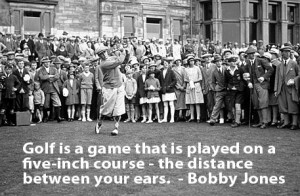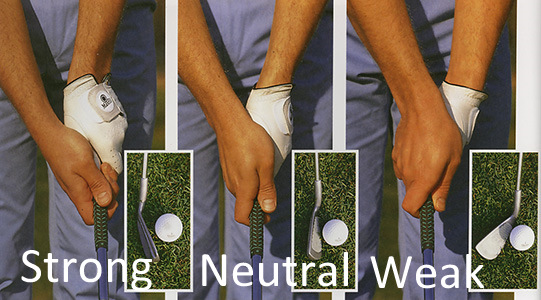As a high school golf coach sometimes you have to help your students make major changes to their golf game in order for them to improve.
Young, gifted, long-hitting golfers typically have a lot natural talent but have habitual bad technique. Maybe they are so flexible and have such amazing hand-eye coordination from baseball that they don’t have to take the club back at a consistent angle or keep their plant foot steady because they can instinctively make those corrections without even thinking about it at 115 miles per hour. By hitting thousands of balls on the range they have learned bad ways to hit the ball far. And their game is built on bad technique.
Those bad habits have lead to them to hit the ball a million miles in every direction. But that distance matters so much that they are far better than their peers with better technique.
The most common change you have to make is to the grip. Most typically young (right-handed) golfers have a strong right hand. (The left hand in the correct position, but the right hand is completely under the club, nearly useless on the backswing.) This allows most of their power to come from a strong left hand and the right hand whipping the club forward at the last second to generate maximum power and spin.
As a result, they make the golf team on power, raw talent, and likely a decent touch around the green. And a very good freshmen will make the JV squad or even the varsity squad on this raw talent because they can muscle their way around the golf course.
But as a coach you know that the strong right hand won’t take them consistently near par– a score which will secure them at the top level of the varsity. For 9 holes they might make it to the low 40s or the occasional 39. But to get down closer to par they are going to have to hit it straight more often and with a strong grip that will be impossible.
So, in the middle of an active season their freshmen or sophomore year, you need to start working on their grip for their junior and senior year.
It’s frustrating for the golfer because the change means they are less competitive. Their scores go from the low 40s to the high 40s or even into the 50s. (Scores they likely haven’t seen since 6th grade) They lose distance as they start swinging the club on a better plain, at a better angle, and the swing feels much less violent. The ball ends up places on the course they’ve never been before.
Frustration sets in.
And they start losing matches. Maybe falling from top of the JV squad down to the the freshmen team. Players they know they are more talented than start beating them.
It’s a test of their self-discipline.
 A grip or a swing change can take months of practice to master before it starts to pay off. It can take a lot longer if the golfer lets old habits sneak in to remain competitive. In front of the coach or on the range they will hold the club properly. But when they need to tee off on a par 5 they will switch the grip to try to power it down the fairway… and wild things begin to happen because they don’t feel natural in that swing anymore either.
A grip or a swing change can take months of practice to master before it starts to pay off. It can take a lot longer if the golfer lets old habits sneak in to remain competitive. In front of the coach or on the range they will hold the club properly. But when they need to tee off on a par 5 they will switch the grip to try to power it down the fairway… and wild things begin to happen because they don’t feel natural in that swing anymore either.
It might seem like a little thing but if you make a dramatic grip change you have to concentrate just to hit the ball squarely. I’ve even seen players completely whiff when you first introduce the change. What used to be instinctive and feel completely natural now feels completely foreign.
As the coach you have to constantly encourage them during this change. “It will pay off. Don’t let old habits sneak in. It will feel more natural if you keep practicing it. You’ll be a better player if you stick to it.”
What you learn as a coach is that the difference between being good enough to make the team and good enough to make the all-conference team isn’t just talent. It’s the ability to practice correctly, stick to making hard changes, and to be coachable through those changes in order to realize your potential.
Life is the same way
A lot of my success has come because of bad habits. But, just like a young golfer, I’ve had to learn that those bad habits have plateaus for my success. I can be successful to-a-point with the talents I have. The hard reality is that most of my long-term success hasn’t just come from bad habits or talent– it’s come from working hard to get past bad habits, and intentionally taking some steps back in order to learn the skills and techniques to go 3 steps ahead.
The same is true for you. The habits and skills you have today will only lead you to the success you know. In order to succeed further you’ll need to correct bad habits, rely less on talent and more on proven techniques. Most importantly you’ll need to remain coachable.
Just like in golf, success is a mental game. You’ll need to push through the frustration of taking a step backwards in order to take 3 steps forward.

Leave a Reply